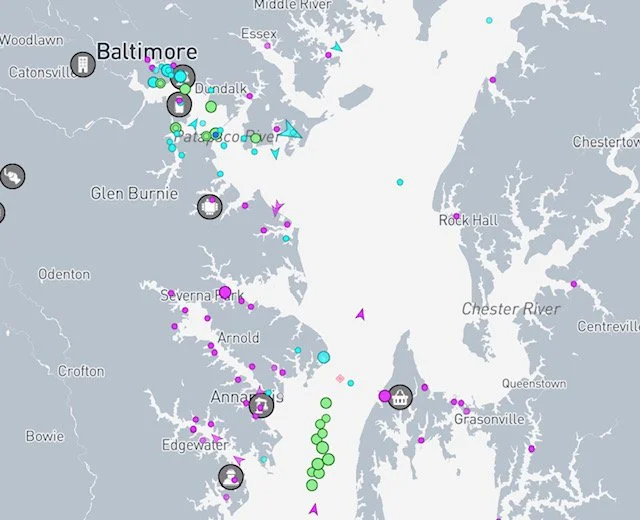Traffic jam
There’s nothing like a disaster to launch me into logistics mode. How will this affect the farm? My fellow vendors? Our customers? The overall supply chain? These last few years have had our markets scrambling to do business in uncharted waters whether it was a two year global pandemic or a snowstorm closing a major transportation artery for a few days. Remember the egg shortages in the grocery stores after the I-95 blizzard? Everything eventually went back to business as normal.
I live in the heart of conspiracy theorist territory and this morning the online speculations and warnings from armchair geopolitical pundits have been nothing short of coffee-snorting entertainment. They’ve turned the Francis Scott Key Bridge collapse into a good ol’ bread, milk, and toilet paper run before a storm forcing me to take a deep breath and count to ten before turning my attention back to actual issues.
If you’re shopping at the farmers market, your actual food is not directly impacted since it is grown in the DelMaVaPAWV region. We depend on the road system, not international shipping to get raw goods from farm to table. There might be detours to travel routes, but that’s about it on the front line.
However, to take such a superficial view on the overall impact would be unwise.
I’ve got a good friend who literally lives on the water as a boat captain. Like me, he’s an app aficionado when it comes to weather and traffic. He’s been tracking the traffic jam in the Chesapeake Bay for cargo ships waiting to enter the port. There are eleven large cargo ships stretching from Bembe Beach to Wiggins Corner and they haven’t moved in over 24 hours. On the other side of the of the wreckage are five more cargo ships that won’t be moving on to deliver their goods to the next port.
You see how many shipping containers are on those ships—as many as 9,000 40’ containers, a tractor trailer size. The Dali was carrying 4,900 when it struck the support. There’s a lot of stuff that can fit in a shipping container.
So I began to think deeper about what items became difficult to source during the last snarling of the global supply chain that could affect your farmers’ businesses and the first thing to come to mind was packaging. I began asking my local foods processors and producers if they’ve got enough packaging to get them through a temporary shortage, since this is what will happen. One of my processors assuaged my fears telling me that the last time they got shorted they now keep enough packaging on hand to last a year. The decision was initially an expensive investment but has provided much needed peace of mind for business continuity to both owners and employees. “This will get us through any shortages and price spikes.”
Consider the last time there were shortages. Products weren’t being made because of factory shut-downs due to a pandemic. This time it’s an interruption in transportation. The goods are enroute, but all those ships will have to get turned around (a feat in itself!), find some where else to unload, arrange new transportation, both of which will ultimately cause traffic jams at other ports, and rearrange logistics, but eventually the products will arrive at their destination.
Will there be economic impacts and supply chain disruptions to this latest disaster? Absolutely. But we’ve made it through shortages of packing jars, eggs, and toilet paper while continuing to show up at the market each week keeping our community fed.

